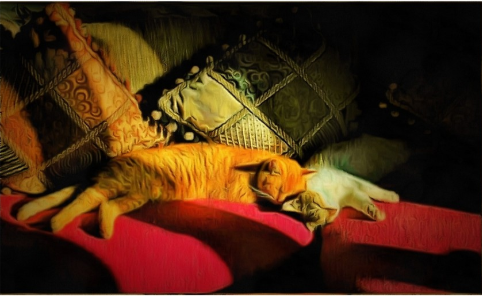
The subject of defining quality of life (QOL) for a cat came up at a visit to the veterinary clinic. It is now something I have to seriously think about. It coincided with my having read an article on QOL for humans with serious illness.
What Is Quality Of Life?
A Google search tells me that ‘quality of life’ is a noun. It refers to “the standard of health, comfort, and happiness experienced by an individual or group”. In other words, “the things that are needed for a good quality of life”.
Is QOL An Abstract Concept?
Recently I read an article ‘Cancer Professionals Need To Be Aware Quality Of Life Is An Abstract Concept For Many Patients‘. The article discusses a number of things including the conundrum of the terminally ill and the impact of chemotherapy, for example, on their QOL. It considers the choices that have to be made.
The thing I found most interesting was the debate about QOL which turns out to be an almost abstract concept. The article refers to the results of some research which found something interesting but not surprising. QOL “is interpreted or imagined in different ways by different people depending on their values, beliefs and world view.”
So if we were each asked to define QOL it is highly likely we would define it in different ways.
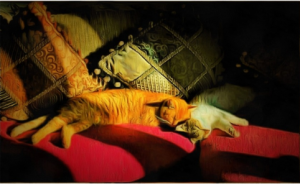
How Do You Define QOL For A Cat?
Another Urinary Infection for Malteser
All of this brings me to this morning’s visit to the veterinary clinic with Malteser. Regular readers of my blog will be aware of Malt’s heath issues. This includes the fact that he nearly died of a urinary blockage and was then found to have developed chronic asthma.
I had to take a urine sample with me today as Malt’s last blood test showed raised glycemic levels. Luckily the urine sample did not show anything to suggest that Malt had also developed diabetes but it did show a potential problem. An ultrasound showed Malt had another urine infection. Given his history, he is now on antibiotics and being kept confined indoors. That way we can keep an eye on him in case another blockage occurs. If you haven’t read my blog on the subject, a urinary blockage in a male cat can be a life threatening.
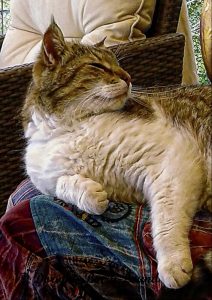
Defining QOL For Malteser?
Malt’s QOL came up in conversation with the vet. We were talking about how in the nice weather he sometimes disappears for a few days. If he did this now, it is bad news because of the regular medication he has to take, night and morning. The vet suggested that perhaps Malteser should become a house cat.
I was quite adamant that Malt would be thoroughly miserable being kept in all the time. At nine years old and always having had the ability to be in the house or go outside he would struggle with the confinement. (Note that in support of that argument, he is currently wailing in the other room and he has only been confined for less than a day so far!)
I asserted that this came down to Malt’s QOL. It was, I felt, better for Malt to carry on as he had always done (once this urinary infection is fixed).
A Decision Based On My Perception Of Malt’s QOL?
On the drive home I started to question myself on that assumption. I remembered what I read in the article about how nebulous the definition of QOL is between individuals. But this time I was making decisions based on my perception of what Malteser might consider QOL. If, indeed, a cat ever gave such a thing a moment’s thought.
Our Experience of Housebound Cats
Stevie Mouse and Emmy are house cats of course because of illness. Stevie’s eyesight is not so good so she is safer in the house. Emmy’s epilepsy and general strange behavior means she is kept in the house for her own safety. The difference here is that they were both kept in the house from when they were small kittens. They have adapted. And I guess Malteser would eventually.
Stung By Previous Experience
To be fair, my thinking was also influenced by a practical issue. With all the other animals in the household, including the two dogs, it would be nigh on impossible to keep him in the house if he really wanted to go out. There would be plenty of opportunities for him to sneak out while we weren’t looking.
Also if he knew he was not allowed out, once he got out he might not be so keen to return or to allow us to catch him. That is how we lost his gorgeous brother Giacomo, he developed a heart problem and sneaked out of the house when he was confined, never to be seen again. I guess I am still stung by that experience.
The Decision Requires More Thought
Soon after I wrote this blog in 2019, Malteser was diagnosed with the beginnings of kidney failure. He had to switch to renal food and again we were advised to keep him indoors. But we chose to let him live his life as he wanted even if it meant he might not live so long. But he is still going strong! A bit slower, some confusion and a bit smelly at times as he doesn’t always wash as much as he should be, he is still enjoying life to the full.
Incredibly, checks a few months later showed his kidneys were functioning perfectly. So our decision to use the renal food but allow him his freedom to ensure quality of life was the right one. And, just to make sure we aren’t complacent he starting showing signs of a possible thyroid problem.
By February 2023, Malteser finally threw us yet anther curveball by developing lymphoma in his intestines. The lymphoma had spread rapidly. As I said in my blog about his life, Malteser lived for three and a half weeks after the diagnosis and lived a full and happy life for that time.
The Issue Of Quality Of Life For A Cat Arises Again
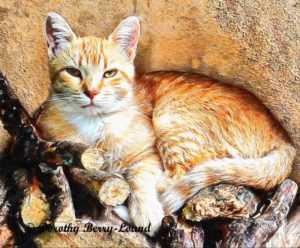
One Saturday night we found our ginger cat Hogie in a desperate state. His back legs and tail were seemingly paralyzed. We rushed him to the vet where x-rays confirmed that some sort of injury had occurred near the base of his tail. He hadn’t been hit by a car, more like something had fallen on him. We never did find out the cause.
The injury meant he had no feeling in one leg and his tail, and barely any feeling in the second back leg. The vet put him on an IV drip immediately and gave him a painkiller and prednisone to reduce any swelling. He said after 24 hours we would see if any feeling had returned.
Well, 24 hours later and there was a marginal improvement so we gave it another couple of days. The vet talked about months of cage rest and possible surgical interventions. But, by then, it was clear that Hogie was bladder incontinent. He also wouldn’t eat and his bowels weren’t working. So, we had him put to sleep, peacefully with me holding his head and stroking him. Because his QOL was the most important thing.
Palliative Care And Quality Of Life
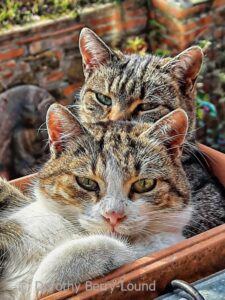
Fast forward to August 2023 and our cat Scruff managed to raise this whole topic of discussion with us again. After a couple of days with a weepy eye that I bathed and treated with ointment, Scruff appeared for her evening meal with a growth on her forehead. A visit to the vet showed it was a severe infection in her sinuses, but the bigger question was what caused the infection? A scan showed it was a tumour in her nasal structure plus one tumour growing in each ear canal. And yet she had shown no symptoms! And there was no possible treatment.
Once again, that awful question, where to have the cat euthanized or not. We had to take into account that, until the lump appeared, Scruff had shown no symptoms. That she was eating well and enjoying time with her family and fully interactive. She must have discomfort (think of the headaches!) but didn’t seem particularly bothered. So, she was enjoying a good quality of life, even with our knowledge of the tumours.
We opted for palliative care which consists of an antibiotic injection every 12 days and daily drops in her food of an anti-inflammatory painkiller. It is not expected that she will live long. Indeed, once she stops eating, shows any sign of distress etc, we will have her euthanized. But at the moment she is enjoying the sunshine and her family while her pain is managed. And that must surely be a definition of quality of life for a cat.
Cat Art Images
Check out my cat art images at my Art Heroes (Europe), Pictorem (USA and Canada) and RedBubble (worldwide) stores.
Before you go

My name is Dorothy Berry-Lound, an artist and writer. You can find out more about my art and writing at https://dorothyberryloundart.com.
You can follow me on Facebook.
Thank you for reading!

Interesting and I’ve thought about my own QOL and what I will do when it deteriorates to some point where it will be unacceptable. I already have a DNR filed with my doctor and hospital – which means that they cannot put me on a breathing machine or a feeding tube to keep me alive. At my age and with my aches and pains – I’m about ready for the sound of the trumpet.
I have a neighbor that has an old dog that has had multiple operations for cysts, he is blind, deaf, and very unsteady on his feet – He wanders around the house bumping into things although most of the time he simply lays on his pallet/bed. He has to be carried outside where he wanders around until he does his business. His momma simply will not let him go. She cannot bathe him but has to have someone come and do it about every two weeks; and there is the vet visit almost as often.
Roy thank you for sharing your thoughts (and I did double check you were happy for them to be published before doing so). I think you are talking about two different things. The first, your own determination of what constitutes QOL and when enough is enough. The second is directly relevant to our current situation, how to determine what is best for an animal we are responsible for. Your neighbor is doing her best and so is the dog – who knows what the dynamic is between them and who is supporting whom.